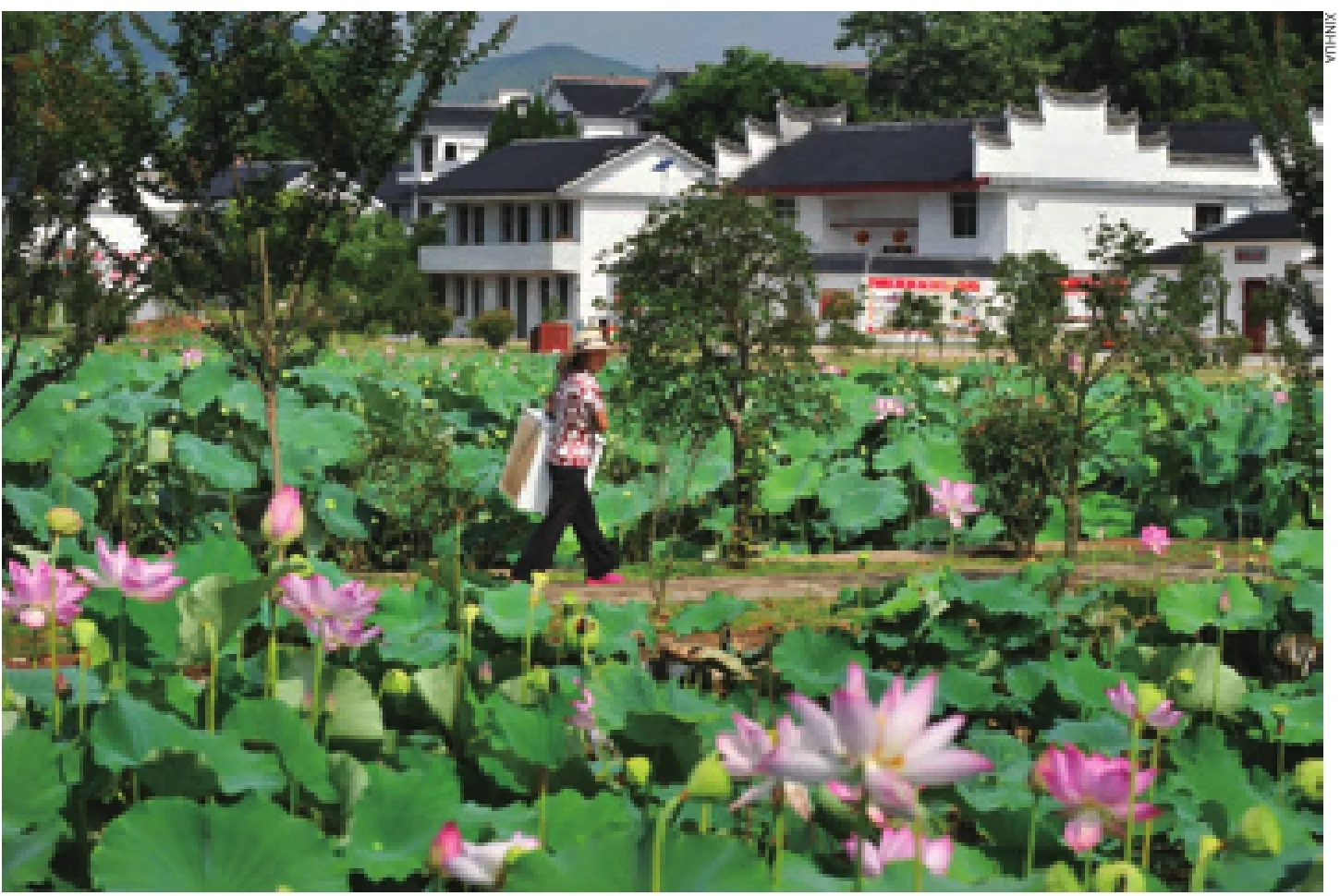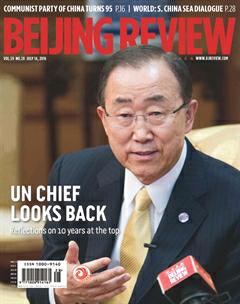Toward Prosperity
2016-09-22JiangxipullsrevolutionarybasesoutofpovertyByLiNan
Jiangxi pulls revolutionary bases out of poverty By Li Nan
Toward Prosperity
Jiangxi pulls revolutionary bases out of poverty By Li Nan
Set foot in Jieyuan Village and you will be greeted by majestic rural scenery with rows of new buildings surrounded by lush trees. But it wasn't like this several years ago.
Thanks to its remoteness, Jieyuan Village in Ruijin City of south China's Jiangxi Province was chosen as a revolutionary base for the Communist Party of China (CPC) in the 1930s. In November 1931, the CPC established the China Soviet Republic (CSR) Temporary Central Government (1931-37) in Ruijin, the prototype of the People's Republic of China (PRC). Thus,Ruijin was known as the cradle of the PRC.
At that time, 186 residents from the village's 1,000-odd population joined the Chinese Red Army, the forerunner of the People's Liberation Army, and served the CSR Temporary Central Government. A total of 105 villagers died in the civil war with the Kuomintang (KMT) army led by Chiang Kaishek (1887-1975).
But the geographical wartime advantage became a developmental bottleneck. Jieyuan Village, wounded by war and hindered by its remote location, became trapped in poverty for decades.
By the end of 2011, the per-capita spending on basic needs for Jieyuan villagers was a meager 967 yuan ($153.47). And nearly 70 percent of its population lived in houses made from mud and clay.
Yet, Jieyuan Village was not the only revolutionary base living below the poverty line. Huasha Village, also in Ruijin, was home to families of 17 revolutionary martyrs who died in the Long March, a military retreat undertaken by the Red Army to evade “encirclement” by KMT forces in 1934-36. Huasha Village had remained in extremely impoverished for years.
Before setting out for the Long March in the early 1930s, the 17 martyrs planted 17 pine saplings in Huasha Village. Over time, the saplings developed into full-grown trees, though the hamlet's development ground to a halt.
By 2012, 43 percent of its residents lived below the poverty line, with an annual percapita income of 2,000 yuan ($316), 300 yuan($47.4) lower than China's poverty threshold. And 103 households, accounting for 87 percent of its population, lived in adobe houses.
However, an extraordinary turnaround has reformed Ruijin's revolutionary bases, especially after the Central Government initiated a campaign to lift them out of poverty in 2012. Guidelines were rolled out that summer to stimulate economic development in the former bases.
Since then, Ruijin has turbo-charged poverty alleviation through developing industries, creating jobs, relocating residents from unfavorable places, and offering locals better access to fnancial services, education and social insurance.
According to Xu Rui, Party Secretary of Ruijin, the local government has successfully lifted 97,000 impoverished locals out of poverty since 2011. The population percentage living in extreme poverty has dropped significantly,from 28.23 percent in 2011 to 10.09 percent in 2015.
This poverty-alleviating campaign has introduced fundamental change to the lives of residents.
Hua Congqi, an octogenarian descendant of one of the 17 martyrs, was finally reunited with family members spanning four generations during the 2016 Spring Festival. Where he lived previously, he had to host his sons one by one at Spring Festivals because his living space were too narrow to accommodate the large family.
Before the 2016 Spring Festival, Hua swapped his shabby home for a new building erected by the local government. The 20-odd members of Hua's family finally enjoyed a reunion under one roof and took a family photo in front of the new house at the festival. Hua,surrounded by his offspring, was glowing with happiness.
“We will be better off,” said Hua. Now, the local government is redecorating the old mud farmhouses to develop Red Tourism, a subset of Chinese tourism in which people visit locations of historical signifcance to the CPC. ■

A resident walks by a lotus pond in Jieyuan Village in Ruijin City of Jiangxi Province in June 2014
Copyedited by Dominic James Madar Comments to linan@bjreview.com
